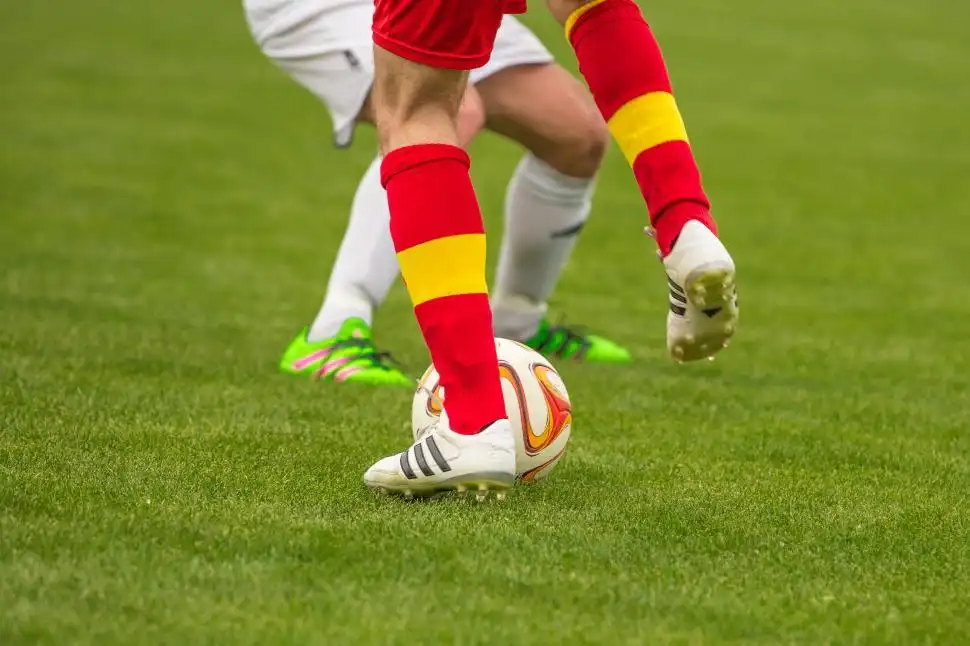
Football is not for the weak, and given the number of exercises football players adopt to maintain optimum physical state for maximum performance, it isn’t surprising for anyone to question the relevance of some of these exercises. For example, some have asked if deadlifts aren’t just overkill for football players. In fact, do footballers even stand to gain anything from deadlifts?
In fulfilling our duty to you, we've saved you the stress and done the research. In this article, we aim to satisfy your curiosity concerning the benefits of deadlifts to football athletes and whether there are associated negative effects.
There’s one more thing- we’ve got our eyes on your safety while you bulk up, so we found these amazing lifting tapes for you to improve your grip on the bars and keep your thumbs free from sores so you can keep beating your ‘personal best’. Now let’s dive straight into the meat of the matter, starting with your first question- Are deadlifts good for football players?
Deadlifts are one of the most beneficial exercises for strength training, and they exert these benefits on multiple muscles in the back and lower limbs. Certainly, football athletes stand to gain from this, owing to their heavy reliance on strength and stamina on the field. Again, this research highlights that deadlifts help maintain and could potentially enhance acute physical performance when used as warm up exercises.
Surely, these results may differ among players owing to individual differences in body composition and physical abilities. With this knowledge, we can now discuss some of the benefits of deadlifts in football.

Because deadlifts target the posterior chain muscles- the hamstrings, glutes, and upper and lower back—footballers gain an overall increase in strength needed for their major moves—sprinting around the field, jumping, and rapidly changing their course as required in the game.
Deadlifts work down the spine, and as such, they engage the core for stability. This is beneficial to football players, who need not only strength but stamina to withstand brutal forces on the field as they bump into other players while trying to maintain their own balance.
While it is a strength exercise, deadlifting greatly impacts cardiovascular health because, of course, the heart needs to work twice as much to supply those muscles. This trains the cardiovascular system to maintain the required output needed for football players on the field since they constantly rely on the deadlift muscles. The result of this is an overall improved endurance on the field, owing to sufficient cardiac output.
Usually the body depends on use for survival, meaning body parts that aren’t in use can gradually regress. For instance, we lose muscle mass as we get older because we get too weak to use most of our muscles. The same thing happens to our bones, and they can lose their mineral content due to disuse. However, because deadlifts actively engage the bones of the limbs and the spine, they increase the mineral density of the bone while simultaneously strengthening the joints.
Constant exercising of the posterior chain muscles eventually makes them strong enough to withstand certain forms of trauma, and because deadlifts achieve this, players get to benefit from a reduced risk of injury in those precious muscles. This is highly beneficial in football because injuries extend beyond physical harm for players, as they could negatively affect their rankings.
Although the benefits of deadlifts can’t be overstated, players need to take cautionary measures, as they could defeat the purpose of the exercise without proper guidance. Coaches and fitness trainers are advised to guide players on the right way to perform deadlifts, because when done otherwise, the effects are counterproductive and expose them to certain risks.
According to this study, potential injury in athletes could result from excessively heavy loads, the large range of motion during the exercises, insufficient resting times between training sessions, and/or faulty lifting technique that leads to excess load on the lower back (lumbar spine). There could also be associated muscle soreness due to the excessive strain placed on the muscles involved, and the spine could suffer in the long run, resulting from improper posture during the exercise.
Regardless of the associated risks, deadlifts have proven to be beneficial to players and play a positive role in their performance on the field, so we can agree that the pros outweigh the cons. In addition to increasing their strength, stamina, and bone density, players who incorporate deadlifts into their routine set themselves up for improved mental strength and focus, as these attributes are needed even to successfully complete the exercise.